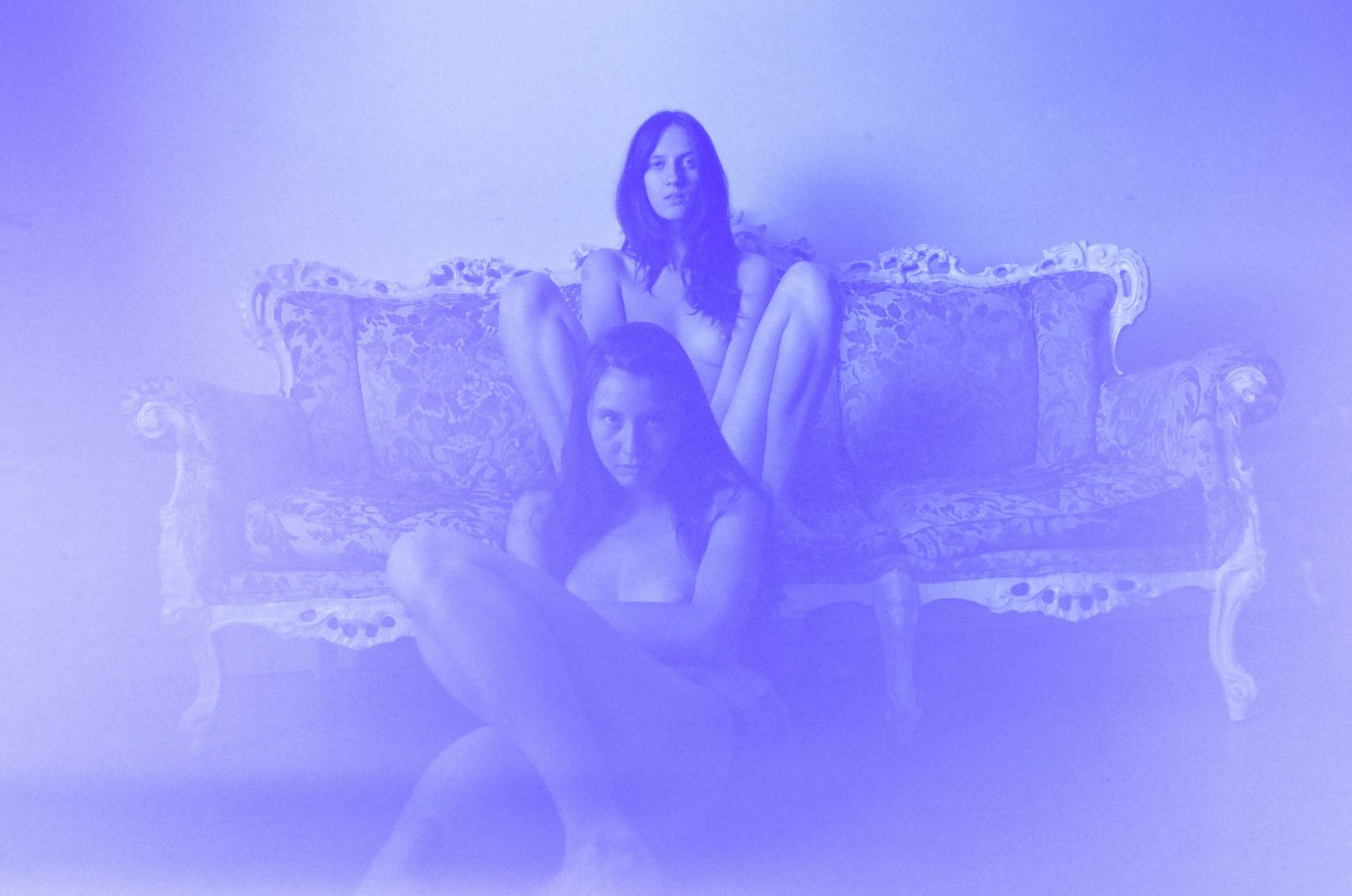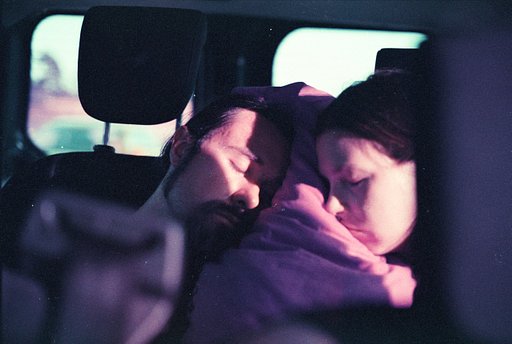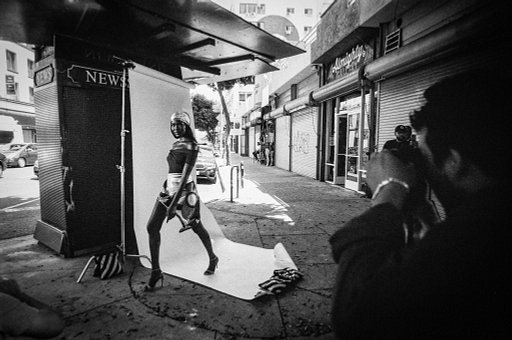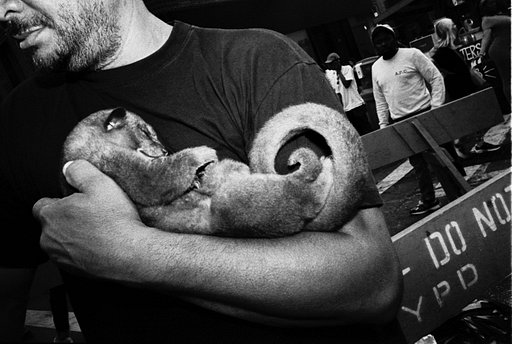Versions of Self with Kimbra Audrey
15 Share TweetKimbra Audrey's oeuvre, unveiled intimacy escaped from a violent industry, bathed in velvet light and vibrant hues. From New York to Paris, we discuss the origins of her work, where her path is headed, and the importance of the analog process in her image making.

Welcome! Would you mind introducing yourself a little bit to the Lomography community?
My name is Kimbra, I’m 26 years old, and have been living in Paris for the past two years. I moved here after spending 8 years in NYC, I got a bit depressed and burnt out of the lifestyle in New York and just needed a change of pace. I shoot only on film which I develop and print myself at home, in a dark room I built.
When did you start working on self-portraits, and when did you decide to include a second (and sometimes third) subject into them? It seems to be such an intimate nature I'm curious to hear about that progression
I started taking self-portraits many years ago when I was living in NYC and working full time as a model. I became extremely depressed while I was modeling because I felt the values of the fashion industry where not at all in alignment with myself. It’s so superficial, and being natural is such an important part of who I am. I wanted to create, raw, honest and authentic photos of myself, which is what ultimately led me to self-portraiture. When I began shooting, I actually didn’t even show my work to anyone, it was completely private and eventually, I shared some photos with my closest friends. My friends were so supportive and encouraging, that they ultimately inspired me to share my work with the world, and they are who I choose to take self-portraits with. The process of shooting is so intimate that I’m only willing to share that with people I know, trust and respect, who also inspire me. It’s such a powerful way to connect with another human and I have such beautiful friends it would be a shame not to document them!
Your work shows both a barrier of isolation as well as a feeling of closeness to those around you. How do you navigate the emotions taking place between this interaction in your self-portraits?
It has been a learning experience to not just be alone constantly and to document my feelings whatever they may be, without judgment. There is such a narrow representation of emotional diversity in most photography and that is not congruent with the abundance of human expression and feelings. I’m very sensitive and I haven’t always felt comfortable expressing my emotions fully, but I have been able to explore that and feel more fully through my self-portraiture. I also feel that showing my vulnerabilities in my work is actually creating a connection with others. Even though I am almost always alone when I work, a lot of people resonate with what I am saying in my photographs.

You've shot a lot of these on Lomography film, processed yourself at home. What qualities of the film relate best to you in your very self-controlled flow of creation?
What I love most about shooting film and specifically developing at home is that no roll will ever be exactly the same, every single one is unique. Even though I try to be as precise as possible with my development times and temperatures of chemicals, there are always other variables at play. When I develop black and white I don’t even use a thermometer anymore, I do it all be feel, and it’s truly have a visceral connection to my film. I also love the “imperfections" that occur naturally from developing at home, sometimes I have some dust, or a faint line on my film, and I fully embrace those “imperfections" and see the beauty in them. My favorite film, which I have gotten a lot of from the Lomography store is expired film. Expired film is always more of a risk to shoot because it can be very faded from age, but it can also be completely magical, the tones and grain are always different to new film and I love the surprise of not knowing exactly what I’ll get when I shoot and develop.
From broken Godard-style crying self portrait video and photo segments to your very wabi-sabi natured images in the outdoors and soft ambient light, do you think that there are choices you make with the actual film and camera that shift the perspective of these experiences, or is it all based on the subject and content matter?
I have very specific choices I make with film, and I save certain rolls of film for specific locations and lighting. When I’m shooting very expired film, I always save it for very bright sun because it can very easily come out too faded in low light. I prefer to use certain cameras in certain places, for example, I like to shoot polaroids at home because I dry and bleach my negatives, and when I’m shooting outside it can get chaotic to keep all my negatives clean and dry. I also always like to connect to a location that I’m shooting in, whether it’s simply meditating or watching the light before I shoot, to see what film, I think will be most appropriate to capture the essence of the space.
Where do you see your work going progressing towards in the next few years?
I’ve been working more and more with Super-8 film and would like to continue harnessing that skill, because I have never studied any video work but I really love the process, it’s very different from photography. I like the challenge of video film and to feel like I am always learning. I’m also currently working on a book, and I’ve decided to print it on recycled paper and will plant trees for every book sold to offset the environmental ramifications of printing and shipping. Environmental activism is a huge part of who I am, and I want to make sure that all of my work is authentic to my values. I want to work more with environmentally conscious companies and brands and continue to explore more green ways of printing and developing!
Is there anything non-photography based that you actively participate in that holds a big grasp on your life? What else do you do besides taking these images?
Horses! I love horses. I grew up riding and when I lived in New York I taught disabled kids how to horseback ride in Prospect Park, which I would like to do again some point in my life. I really want to have property where I can have horses, which unfortunately isn’t possible in Paris, but I go riding whenever I get the chance. I’m also vegan and animal rights are extremely important to me, I’ve worked a lot with different animal shelters, and will continue to help whenever I can.
What do you have down the pipeline in the next few months?
I will have some work in a group show in Spain in June and am planning to go to Spain for that. I also am very excited for summer, because of the nature of my work, I shoot the most in summer and try to spend winter printing more than shooting. I try to take as many trips as possible and love exploring France and the countryside so will be very busy finding new locations in the next few months. As I mentioned before I’m also working on a book currently which is a very slow, long, tedious process. My entire apartment is currently plastered with prints because I’m physically laying out the book in my home, it’s very important for me to sit with my work to fully feel and understand it.
Where else can we find your work?
The most recent publication I was fortunate enough to collaborate with is called Jane Magazine, it’s Australian based and shot entirely on film, which I absolutely adore. I have some self-portraits and a long interview about my work and process in their most recent issue. They really appreciate slow art and slow processes which is so rare in today’s world, we need more publications like them! It’s very important to me to only collaborate with people that I can connect to on a deeper level.
You can see more of Kimbra's work on her website and her Instagram
written by blaskovichs on 2018-06-09

























No Comments